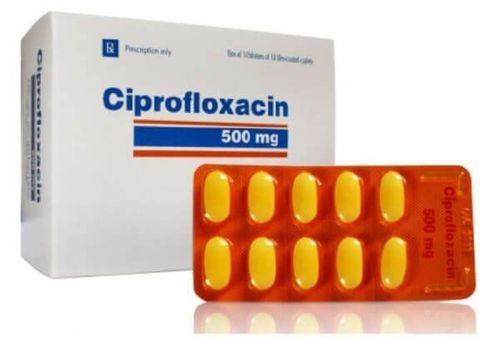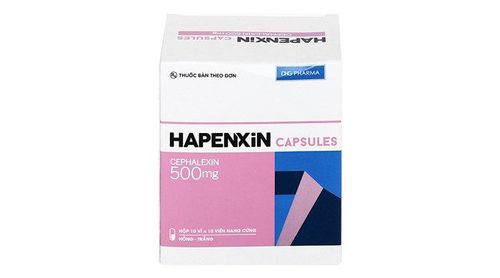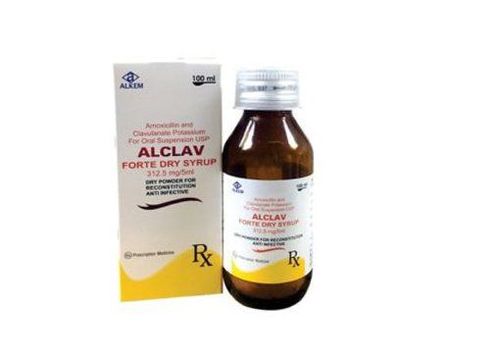This is an automatically translated article.
Cepemid is an antibiotic that is used to treat severe infections. With the effect of the drug, it will be used to treat severe infections in many different parts of the body, helping to fight bacteria from entering, destroying and healing wounds and infections quickly.
1. What is Cepemid?
Cepemid belongs to the group of drugs used to treat parasites, anti-infectives, antivirals, and antifungals.Dosage form: Powder for injection Packing: Box of 1 single vial of 20ml capacity Main ingredients are: each vial contains Imipenem monohydrate equivalent to 0.75g Imipenem and cilastatin sodium equivalent to 0.75g cilastatin Uses of active ingredients: Imipenem is a very broad-spectrum antibiotic belonging to the beta-lactam group. Cepemid is used to kill bacteria rapidly by interacting with some penicillin-binding proteins (PBP) on the outer membrane of bacteria. Thereby, the drug causes inhibition of bacterial cell wall synthesis by the same mechanism as other beta-lactam antibiotics.
2. Uses of Cepemid
Imipenem is not a first choice drug, but only for the treatment of severe infections. The drug Imipenem or Cilastatin is effective on many types of infections, including urinary tract and lower respiratory tract infections; intra-abdominal and gynecological infections; infections of the skin, soft tissues, bones and joints. Cepemid is particularly useful in the treatment of hospital-acquired mixed infections. Treatment of infections caused by mixed bacteria for which other agents have a narrower spectrum or are contraindicated due to the potential for toxicity.
3. How to take Cepemid?
Cepemid should only be used by intramuscular injection or intravenous infusion, not for direct intravenous injection. Accordingly, it is necessary to dilute the amount of drug in the vial with the infusion solution so that the final concentration of Mipenem drug is not more than 5 mg/ml. Cepemid infusion over a period of 30 to 60 minutes.
Patients self-monitor if nausea or vomiting occurs while taking the drug, the infusion rate must be reduced.
It is necessary to shake the vial thoroughly until a clear solution is formed. The color change from colorless to yellow does not affect the effectiveness of the drug. Cepemid is most stable at pH 6.5 - 7.5. Use suspension in Lidocaine hydrochloride for intramuscular injection within 1 hour after reconstitution.
4. Dosage of Cepemid
Dosage: Based on the amount of active ingredient Imipenem must take.
4.1. For adults Intravenous infusion: Mild to moderate infections: 250 - 500 mg every 6 - 8 hours (1 - 4 g daily). Severe infections due to only moderately sensitive organisms: 1g every 6-8 hours. The maximum daily therapeutic dose is 4g or 50 mg/kg body weight. Infusion dose of 250 - 500 mg over 20 - 30 minutes; 1g dose infusion over 40-60 minutes.
Intramuscular: Only applicable when treating mild to moderate infections: 500 - 750 mg, every 12 hours (Note: The therapeutic dose of 750 mg is used for intra-abdominal infections and infections. bacteria more severe in respiratory tract, skin and gynecological). The total intramuscular dose should not exceed 1.5 g per day and should be injected deep into the large muscle mass.
4.2. Children under 12 years of age: Safety and efficacy of Imipenem have not been established in children, but intravenous Imipenem has been used effectively, with therapeutic doses of 12-25. mg/kg, every 6 hours.
In case of renal failure, reduce the dose as follows: Creatinine clearance 30 - 70 ml/min, giving 75% of the usual dose; Creatinine clearance 20 - 30 ml/min, for 50% of the usual dose; Creatinine clearance less than 20 ml/min, for 25% of the usual dose. Children will often be given an additional dose after hemodialysis.
5. Undesirable effects of the drug Cepemid
The most common side effects of Cepemid use are nausea and vomiting. Convulsions may occur, especially when high doses are used in patients with lesions of the central nervous system and in patients with renal impairment. Patients with a history of allergy to other beta-lactam antibiotics may have a hypersensitivity reaction when taking imipenem. Rare adverse effects such as hypotension, palpitations; seizures ; erythema; pseudomembranous colitis; neutropenia (including agranulocytosis), eosinophilia, anemia, thrombocytopenia, increased prothrombin time; , Coombs test (+), increased AST, ALT, alkaline phosphatase, and bilirubin; reaction at the injection site; increased blood urea and creatinine, urinalysis is not normal. Undesirable effects on the central nervous system such as myoclonus, confusional state or occurrence of convulsions after intravenous administration of imipenem/cilastatin. These undesirable effects are more common in patients with CNS disorders and impaired renal function. As with other antibiotics, prolonged use may lead to overgrowth of non-susceptible organisms. Inform your doctor about any unwanted effects encountered while using the drug.
6. Interactions of Cepemid
Beta-lactam antibiotics and Probenecid can increase the toxicity of Imipenem/Cilastatin or Cepemid drugs.
7. Some notes when using Cepemid
7.1. Contraindications of the drug Cepemid People with hypersensitivity or hypersensitivity to any component of the preparation. When using diluents containing lidocaine hydrochloride, the preparation for intramuscular administration is contraindicated in patients with a history of hypersensitivity to anesthetics of the amide type, and in patients with severe shock or heart block. Use in pregnant and lactating women:
Pregnancy: Imipenem drug crosses the placenta. There are currently no adequate studies on the use of imipenem/cilastatin in pregnant women. Pregnant women should only use the drug when the treating doctor has weighed the benefits against the risks to the mother and fetus. Lactation: Since Imipenem is excreted in breast milk, it should be used with caution in lactating women. Precautions when using the drug:
Undesirable effects on the central nervous system such as myoclonic seizures, confusional state or convulsions have occurred with intravenous administration of Cepemid. These undesirable effects are more common in patients with concomitant CNS disorders with impaired renal function. As with other antibiotics, prolonged use of Cepemid may lead to overgrowth of non-susceptible organisms. In summary, Cepemid is an antibiotic that is effective in treating severe infections. With the effect of the drug, it will be used to treat severe infections in many different parts of the body, help fight bacteria from entering, destroy and heal wounds and infections quickly. To ensure the effectiveness of treatment and avoid side effects, patients need to take medicine according to prescription or consult a doctor, professional pharmacist.
Follow Vinmec International General Hospital website to get more health, nutrition and beauty information to protect the health of yourself and your loved ones in your family.
Please dial HOTLINE for more information or register for an appointment HERE. Download MyVinmec app to make appointments faster and to manage your bookings easily.













